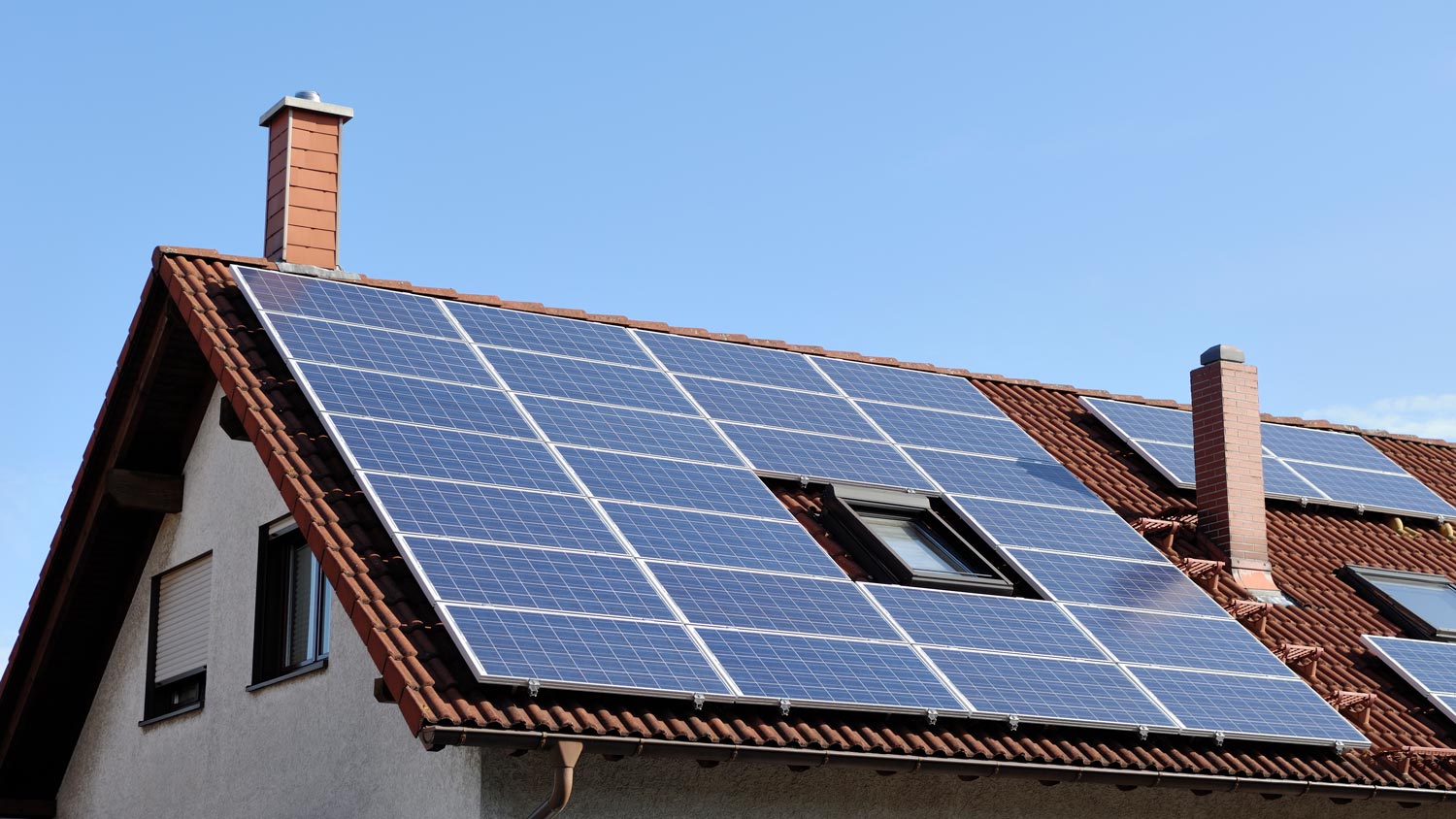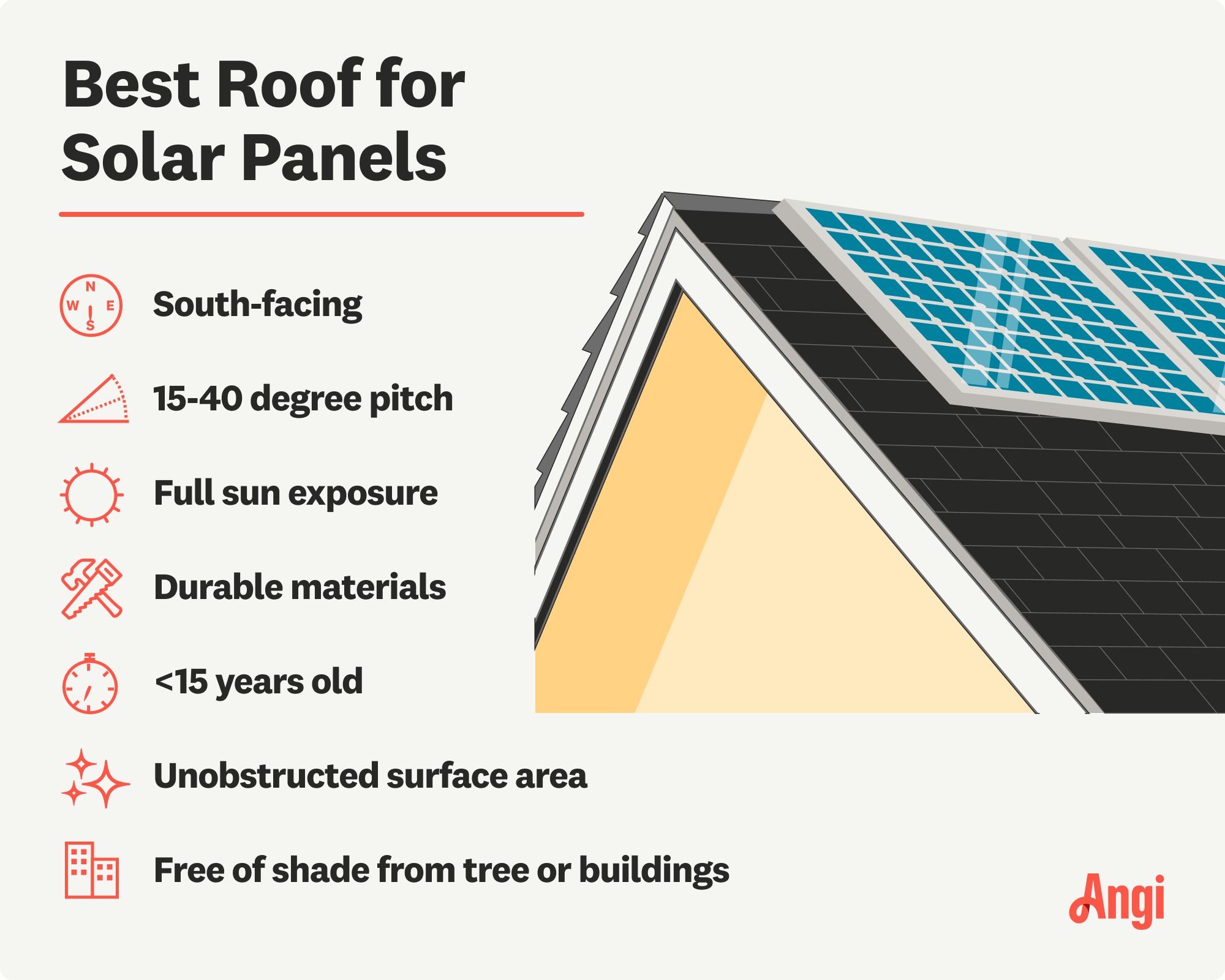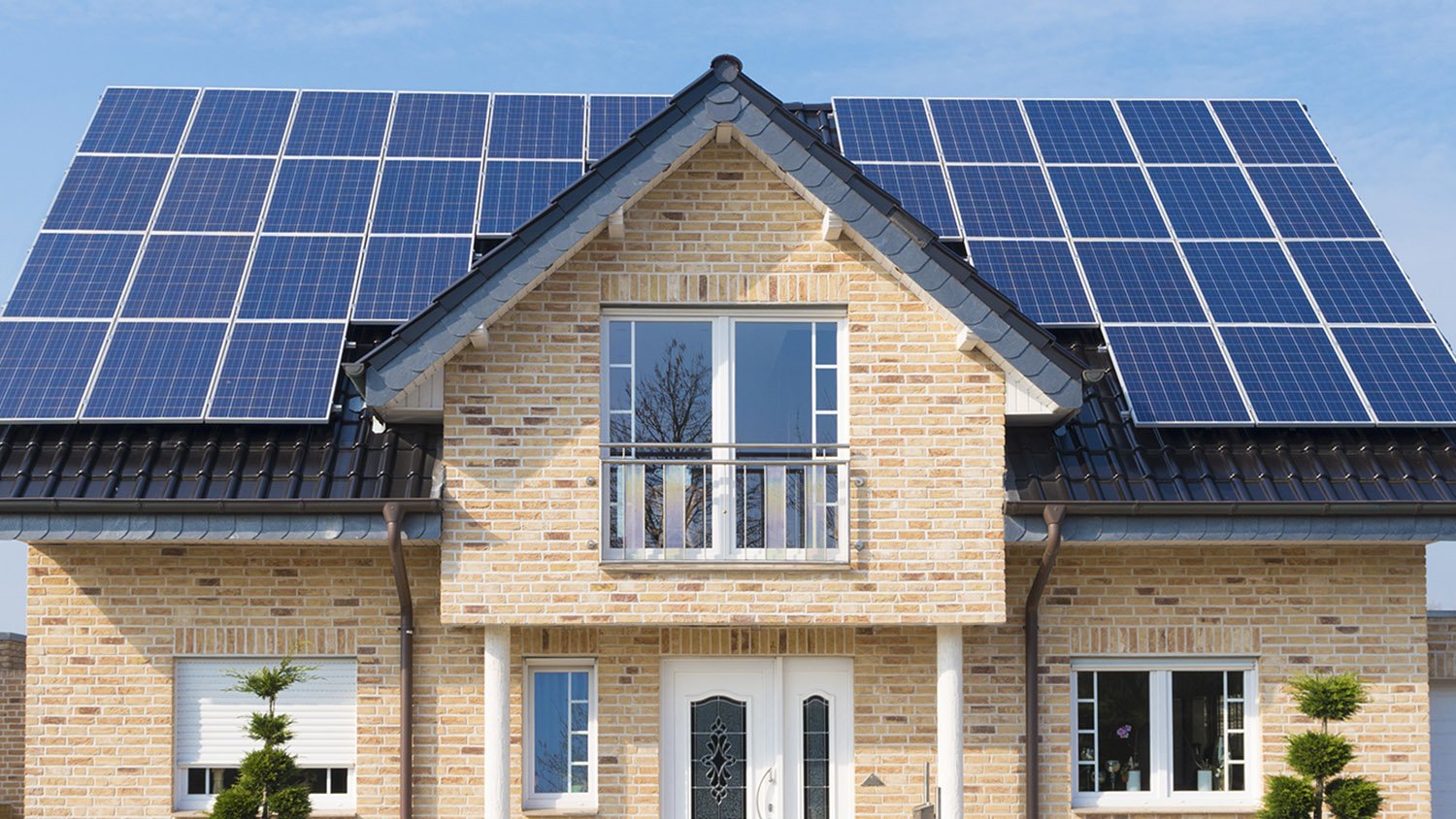
Discover the average solar panel installation cost, key price factors, and expert tips to help you budget for your solar project.
Your roof and energy needs are the biggest factors


Solar energy is best for homes in sunny climates with high energy costs.
The ideal roof is south-facing with a 30- to 45-degree pitch.
Solar panels can still work on east-west roofing with a 15- to 30-degree pitch.
Your panels should have enough energy output to offset installation costs.
Solar energy can save you an average of $1,380 per year on your electric bill, but only some homes can reap the maximum benefits. You’ll need the right roof, climate, and sunlight exposure to balance out your local energy costs. This guide will help you figure out if your home is a good fit for solar panels.
Though most homes will see some energy savings by going solar, solar panels are only worth the installation cost in some situations. Savings of up to $100,000 on energy bills throughout the panels’ 25-year life span are possible in ideal conditions. In less suitable conditions, you may only save around $10,000. Here are a few signs that your home is good candidate for solar panels:
You live in a sunny climate
You live in an area with high energy costs
You use a high-to-average amount of energy
You have a south-facing roof with full sun exposure
Your roof pitch is 15 to 45 degrees (but preferably 30–45 degrees)
Your roof is made from a strong material that can support panels
Your roof has enough unobstructed surface area to fit panels
Your roof was installed within the last 15 years
If your roof isn’t suitable, you can mount solar panels on the ground if you have a large space on your property with full sun exposure.

To understand if solar energy is right for your home, you’ll need to consider a number of different factors—from the direction, pitch, and material of your roof to your local energy costs, climate, and sun exposure.

Solar panels are most commonly mounted on roofing, but not all roofs can support the panels. Certain roof materials (like thatch) aren’t sturdy enough to hold the weight of the system. Additionally, solar panels should face the equator. In most of the United States, this means your roof should have southern sun exposure. East-west orientations may still be viable but won’t be as efficient. The ideal roof:
Faces south
Has a slope between 30 and 45 degrees
Has significant unobstructed surface area free from chimneys and skylights
Is not shaded by trees or tall buildings
Is made from a durable material
Most solar installers will make sure your roof is in good condition and won’t need a replacement in the coming years. If you have an older roof, consider a replacement before going solar, since removing solar panels costs $3,000 to $12,500 if you need to make repairs not covered by home insurance or warranties.
When considering solar panels, you’ll need to assess your roof's age, size, pitch, and shape. The trees shading your home will also impact whether rooftop solar panels are the best option. A solar panel installation pro can assess your roof and recommend the next steps.
If your energy bill is already low, solar panels might not be worth the cost. You’ll save the most if your energy usage is high or you live in an area with higher-than-average energy costs. For example, you could save up to $90,000 over the life span of your panels in California, where electricity costs around $0.30 per kWh. In Washington, where electricity costs around $0.11 per kWh, you’ll only save an average of $20,600.
Your solar panels don’t need direct sunlight to work, but the areas that get the most of it reap the largest energy savings. Wherever you mount your solar panels should have unobstructed sunlight for all (or at least most) of the day. Tall buildings and large trees will eat away at the efficiency, but power optimizers can help mitigate some shaded panels.
The sunniest climates are the best for solar, while areas with frequent cloudy conditions and regular snowfall will have less output. Solar panels do work during the winter, but certain geographic locations receive less light. For example, some parts of Alaska only get four hours of sunlight a day at the height of winter. Meanwhile, areas of Texas can get more than 10 hours of sunlight.
The National Renewable Energy Laboratory (NREL) has detailed solar maps to help you estimate the amount of sun your area will get each year. If you live in an area with a lot of sun, it’s a safe bet that solar energy is a good idea for your home.
An easy way to figure out if your home is a good fit for solar panels is by checking Project Sunroof. This application from Google allows you to search your address and estimate your energy savings. This on-going project hasn’t mapped every roof, but you can still search your area to get an idea.
If you’re considering a swap to solar energy, it’s best to hire a solar panel installer near you. A qualified pro already knows how homes in your area benefit from solar panels (including whether government incentives and net metering programs can help you save). They can inspect your property and determine which system will work best.
If solar panels aren’t a good fit, you can still make use of passive solar energy to cool and heat your home. This can improve your energy savings alongside high-efficiency HVAC upgrades.
From average costs to expert advice, get all the answers you need to get your job done.

Discover the average solar panel installation cost, key price factors, and expert tips to help you budget for your solar project.

Discover the Tesla Powerwall installation cost, including average prices, cost factors, and tips to help homeowners budget and save on their Powerwall project.

Get a clear estimate for solar water heater repair cost. Learn what impacts pricing and how to budget for your solar water heater repair.

There are three types of solar panels: monocrystalline, polycrystalline, and thin-film. Before choosing one for your home, here are the pros and cons of each.

Comparing solar quotes doesn’t have to feel like an overpriced guessing game. Find out how to properly compare your solar options here.

Looking to heat your home with the help of the sun? Learn about different types of solar thermal collectors in this guide.